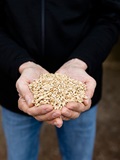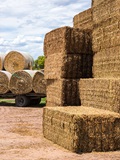South West WA
20 May 2020
| Date | WA 23 | WA 22 | WA 5YA |
|---|---|---|---|
| 06-Jan-23 | 280 | 275 | 281 |
| 13-Jan-23 | 283 | 275 | 283 |
| 20-Jan-23 | 293 | 275 | 283 |
| 27-Jan-23 | 293 | 275 | 283 |
| 03-Feb-23 | 293 | 275 | 283 |
| 10-Feb-23 | 293 | 275 | 288 |
| 17-Feb-23 | 298 | 275 | 288 |
| 24-Feb-23 | 303 | 275 | 288 |
| 03-Mar-23 | 303 | 275 | 289 |
| 10-Mar-23 | 303 | 275 | 288 |
| 17-Mar-23 | 306 | 225 | 280 |
| 24-Mar-23 | 308 | 225 | 280 |
| 31-Mar-23 | 308 | 225 | 280 |
| 07-Apr-23 | 308 | 225 | 280 |
| 14-Apr-23 | 308 | 225 | 280 |
| 21-Apr-23 | 308 | 225 | 280 |
| 28-Apr-23 | 308 | 225 | 277 |
| 05-May-23 | 310 | 225 | 277 |
| 12-May-23 | 313 | 225 | 277 |
| 19-May-23 | 315 | 225 | 277 |
| 26-May-23 | 320 | 225 | 277 |
| 02-Jun-23 | 323 | 225 | 277 |
| 09-Jun-23 | 323 | 230 | 282 |
| 16-Jun-23 | 321 | 235 | 288 |
| 23-Jun-23 | 318 | 235 | 288 |
| 30-Jun-23 | 313 | 235 | 288 |
| 07-Jul-23 | 308 | 235 | 288 |
| 14-Jul-23 | 303 | 235 | 288 |
| 21-Jul-23 | 298 | 235 | 288 |
| 28-Jul-23 | 293 | 235 | 288 |
| 04-Aug-23 | 288 | 255 | 292 |
| 11-Aug-23 | 288 | 255 | 292 |
| 18-Aug-23 | 288 | 255 | 292 |
| 25-Aug-23 | 288 | 255 | 289 |
| 01-Sep-23 | 288 | 255 | 289 |
| 08-Sep-23 | 255 | 289 | |
| 15-Sep-23 | 255 | 289 | |
| 22-Sep-23 | 255 | 289 | |
| 29-Sep-23 | 255 | 289 | |
| 06-Oct-23 | 255 | 289 | |
| 13-Oct-23 | 255 | 287 | |
| 20-Oct-23 | 258 | 288 | |
| 27-Oct-23 | 258 | 288 | |
| 03-Nov-23 | 258 | 303 | |
| 10-Nov-23 | 258 | 303 | |
| 17-Nov-23 | 263 | 299 | |
| 24-Nov-23 | 268 | 297 | |
| 01-Dec-23 | 268 | 295 | |
| 08-Dec-23 | 268 | 295 | |
| 15-Dec-23 | 273 | 296 | |
| 22-Dec-23 | 273 | 299 | |
| 29-Dec-23 | 278 | 301 |
Notes:
Change in price is the change since the last report. Hay quoted is sourced and delivered locally, GST exclusive unless stated otherwise. It should be noted that local prices quoted may not be the cheapest available, sourcing it from another region may be more affordable, and buyers are encouraged to evaluate all options. Prices are indicative to a mid-range shedded product, and based on the best indication of market value at the time of reporting. It should be noted there is a wide variation in quality of hay, prices for a mid-range product will not reflect the weighted average of trade. Prices will naturally vary based on the product quantity and quality, buyer/seller relationship and the size of the trade.The hay report has been commissioned by Dairy Australia to provide an independent and timely assessment of hay markets in each dairy region. This report is created using data provided by the Australian Fodder Industry Association (AFIA). It should be remembered that actual prices may vary for quality or other reasons. Whilst all reasonable steps have been taken to ensure the accuracy of the information contained in this report, Dairy Australia disclaims all liability to the fullest extent permitted by Australian law for any inadvertent errors and for any losses or damages stemming from reliance upon its content. Dairy Australia recommends all persons seek independent advice and, where appropriate, advice from a qualified advisor before making any decisions about changes to business strategy.
Commentary
- Another drier week across the region this week, with large parts of the southwest seeing less than 5mm of rain for the week, and only the southern coast seeing falls of more than 5mm of rain. Mostly clear sunny days, though still cool.
- Pastures in the region are green and providing good quality green feed opportunities. Mixed grass and clover pastures around Kojonup are showing excellent biomass and growth and will be grazed in the coming week before being locked up until October.
- Cereal and oilseed crops in the north of the region are beginning to look a little dry again and could do with some additional rainfall. However, comments continue to suggest that the season is still looking quite promising.
- Recent sunshine has reportedly given a great boost to some of the crops in the southern tip of the region, which had been lagging a little due to earlier cold and wet conditions. Growers would still like a few more weeks of drier conditions to make the paddocks more trafficable, but the crops are looking full of potential.
- Enquiries are fairly stable in the region. Good green feed availability is keeping herds well fed so little supplementary feed is needed, though some roughage is being requested in the southern coastal regions. Most hay is heading to the north to supplement poorer pastures.
- No change to prices this week.
- Cereal hay: +/-0 ($265 to $310/t). Prices remain steady this week.
- Lucerne hay: +/-0 ($360 to $430/t). Prices remain steady this week.
- Straw: +/-0 ($95 to $135/t). Prices remain steady this week.
- Pasture hay: +/-0 ($210 to $240/t). Prices remain steady this week.
- Please note: Unless stated otherwise, prices are per tonne, sourced and delivered locally. The price range indicated is for feeds of varying quality with the price range generally indicative of quality of feed. We recommend feed testing and viewing of fodder before purchase to be sure of the quality of feed.

